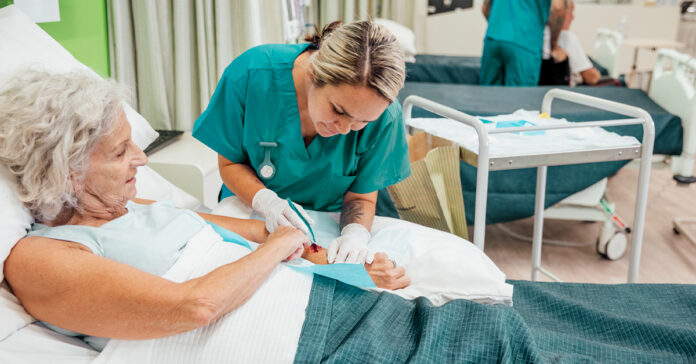A couple of months back, I had to go through a c-section, which is, as you know, major surgery on the abdomen. The biggest fear I had at that moment didn’t revolve around the surgery itself, but how my wound will heal when I got home – more specifically, I was worried about whether or not it’ll heal properly.
I decided to share my fears with my doctor, who explained that the cut has to go through 3 stages of recovery – all of which might be painful and scary to experience – and she also told me that I must always monitor the incision so that I make sure that it’s healing as it should and that there are no signs of infection.
If you had or will have surgery, you might be having the same fears as I did. However, learning more about how surgical wounds heal will help you relax and heal quicker, but it’ll also help you know if it’s time to contact a doctor due to an infection. To assist you to feel at ease, here are the three phases of recovery, as well as a few red flags that might indicate that there is an infection that must be taken care of:
There Are 3 Phases of Recovery

As we mentioned in the previous paragraph, there are three main phases of recovery that your incision and you will go through. Now, all of them can get painful and scary at times, which is why you must remember that it’s normal to feel as you do. The three stages of healing that you’ll go through are the following:
Stage 01: The Incision Will Start to Swell
The first stage of healing will start relatively soon after your surgery is completed, mostly because the blood vessels in the area of the incision will start creating clots so that they can prevent any further bleeding. During the same time, the white blood cells will start arriving at the injury, and their main assignment is to battle and get rid of any bacteria that might cause an infection. This stage can last up to six days after the surgery and it’s normal for the area to be red and painful, to swell, and it might even be warm when you touch it.
You must keep in mind that, if you notice that there is oozing pus with a really unpleasant smell coming out of your wound, it might be an indication that an infection is developing, and if so, you must contact your doctor as soon as possible. Additionally, if more than ten days pass and the redness, aches, swelling, and warmth don’t go away, you should call your physician, mostly because you’ll want them to examine the wound for any signs of an infection.
Stage 02: There Will Be Scarring
This stage will last from five days to a month after the procedure has been completed. During this time, you’ll notice scarring, more specifically, you’ll see that a scar is beginning to form where the incision once was. Also, don’t get scared when the edges start pulling together or if you notice and feel some thickening under the scar/incision area. It’s also completely expected to see a few fresh red spots inside of the cut, but rest assured that this is all normal and a part of recovery.
It’s worth mentioning that experts such as dermaclose.com that specialize in wound closures and nerve reconstruction tell all of their patients that they’ll feel shooting and quite sharp aches in the incision area, which is mostly a good sign, especially since it means that you’re nerves are getting back senses. Over time, this particular feeling needs to feel less severe and it shouldn’t happen frequently, and if it does, you should, of course, contact your physician.
Stage 03: A New Area Will Form
I’m currently in the last stage of recuperation, which usually happens around six months to two years from the procedure. During this stage, you’ll see a lot of shifts in the scarring that has formed. For instance, it will go from appearing ugly, red, and wide to a flat, thin, and normally-colored area. You should remember that, from time to time, especially when the weather changes, you could still feel some pain in the area, but this is completely typical and it should be less severe over time.
There Are Some Infection Signs That You Should Be Aware of
No article on this topic would be complete without mentioning that there are some common signs of infection that you must be aware of. If you notice any of the symptoms we’ll mention in the list above, you should immediately schedule a meeting with your doctor so that they can create a treatment plan for you. Some of the most common signs of infection are the following:
1. If it Feels Warm All The Time – we mentioned that it’s normal for the incision to feel warm immediately after the procedure, however, if it still feels warm even after a week from the surgery, it can be a warning that your white blood cells are trying to combat infection and bacteria. If this continues happening more than a week after you’ve been operated on, you must immediately call your doctor since they’ll tell you what you must do.
2. If Redness Remains – it’s perfectly normal for the incision to be red, swollen, and painful after the procedure, mostly because blood will be sent to the injury to deliver oxygen and other substances that’ll help with healing. However, if it remains red for five or more days after the operation, it could be a sign that your body isn’t healing as it should, hence, it’s always better to have it checked out by your physician.
3. If There is Pus And Pain – yes, there will be a bit of blood and pus after the procedure, but, when a day passes, the incision area should be clean. If you notice that there is pus or any other discharge throughout the healing process, or if the discharge starts smelling really bad, it’s one of the signs of infection that you must be extremely careful about. If this is followed by long-lasting pain, contact your doctor as soon as possible.
Conclusion

No matter what type of surgery you have, the healing process will take time, which is why you must be patient for the duration of the entire process. If the recovery goes as planned and if there are no signs of infection, you’ll be up and running in no time, of course, when your physician gives you the green light.









